
Many people do not know that kale raab is fit to eat, let alone delicious, but it's actually sweeter and more delicate than actual kale leaves. The small, yellow flower bud clusters that pop up when kale crops are about to go to seed are known as kale raab, or kale rabe. This little-used treat makes for an impressive ingredient, but is surprisingly easy to prepare. Quick cooking will highlight the fragrant, clean taste of your kale raab.
Sautee
Step 1
Add a thin layer of olive oil to the bottom of a saute pan or wok. Heat the oil over medium heat.
Step 2
Add the kale raab to the hot oil. Sprinkle with a bit of salt.
Step 3
Saute the kale raab, stirring occasionally. Cook for about 3 to 7 minutes, or until the raab is tender, with the thin stalks still slightly crisp.
Step 4
Add some minced garlic, lemon juice and pepper, if desired. Serve immediately.
Steam
Step 1
Fill a large pot with a few inches of water, or enough to barely reach the bottom of the steamer insert. Bring the water to a boil over high heat.
Step 2
Add the kale raab to the pot. Sprinkle the raab with some salt. Cover the pot with a tightly fitting lid and reduce the heat to medium.
Step 3
Let the kale raab steam, undisturbed, for about 5 minutes. Remove the raab when it is tender, but the thin stalks are still crisp. Drizzle with some olive oil and lemon juice and sprinkle with salt and pepper, if desired.
Blanch
Step 1
Bring a large pot of water to a rolling boil over high heat. Add a handful of salt to the water. Add the kale raab to the water.
Step 2
Boil the kale raab for about 3 minutes. Remove when it is a darker shade of green and slightly cooked, but still a bit crisp.
Step 3
Use a spider utensil to scoop the raab out of the boiling water, working in batches if needed. Transfer the kale raab into the ice water. Stir the raab around a bit to completely submerge it in the ice water to stop the cooking process.
Step 4
Use the spider to remove the kale raab from the ice water. Toss the spider around a bit under warm running water, if needed, to melt and leftover any ice cubes that still remain in the raab.
Step 5
Turn off the water. Hold the spider over the sink, and push down on the raab to squeeze out the water. Transfer the raab to a clean kitchen towel to drain off the rest of the water.
Step 6
Season to taste and serve, or add to another dish.
Related Articles

How to Boil Cilantro

How to Blanch Kale for Freezing

Cooking Kale Greens

How to Steam Cook Cabbage
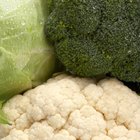
How to Steam Cauliflower & Broccoli
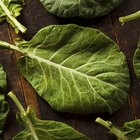
The Healthiest and Best Way to Cook ...
How Do I Clean Water Cress?

How to Cook Prawns in a Oven

How to Cook Frozen Cassava
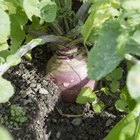
How to Cook Rutabaga in the Microwave

How to Cook Kale in a Pan With Butter ...

How to Make Collard Greens With Smoked ...

How to Cook Red Aztec Spinach

How to Freeze Fresh Asparagus

How to Cook Fresh Broccoli in a Slow ...
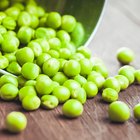
How to Fry Peas

How to Freeze Ramps & Wild Leeks

How Long Does It Take to Cook Linguine?

How to Cook Frozen Dumplings With a ...
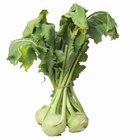
Ways to Cook Kohlrabi
References
Tips
- Try serving the kale raab as a side dish alongside baked chicken and wild rice pilaf.
- Take your kale raab side dish to the next level by making a tasty gratin with it. Layer sauteed kale raab, bacon, and the cheese of your choice in a casserole dish. Saute garlic and onion until tender, then stir in some flour and cook for a few more minutes. Add some heavy cream, salt and pepper. Simmer the mixture for a few minutes, whisking often. Pour the cream mixture over the top. Sprinkle with a bread crumb and butter mixture, then bake until the casserole is bubbly and golden on top.
- Add cooked kale raab to soup, pasta dishes, or stir fry. Also try as a pizza topping along with garlic and mozzarella cheese.
- You can use substitute kale raab for other raabs or for hearty, leafy greens, in virtually any recipe.
Writer Bio
Sarah Bourque has been a freelance writer since 2006 and is based in the Pacific Northwest. She writes and edits for the local publisher, Pacific Crest Imprint and has written for several online content sites. Her work recently appeared in "The Goldendale Tourism and Economic Development Magazine" and "Sail the Gorge!" magazine. She attended Portland Community College where she studied psychology.
Photo Credits
BananaStock/BananaStock/Getty Images